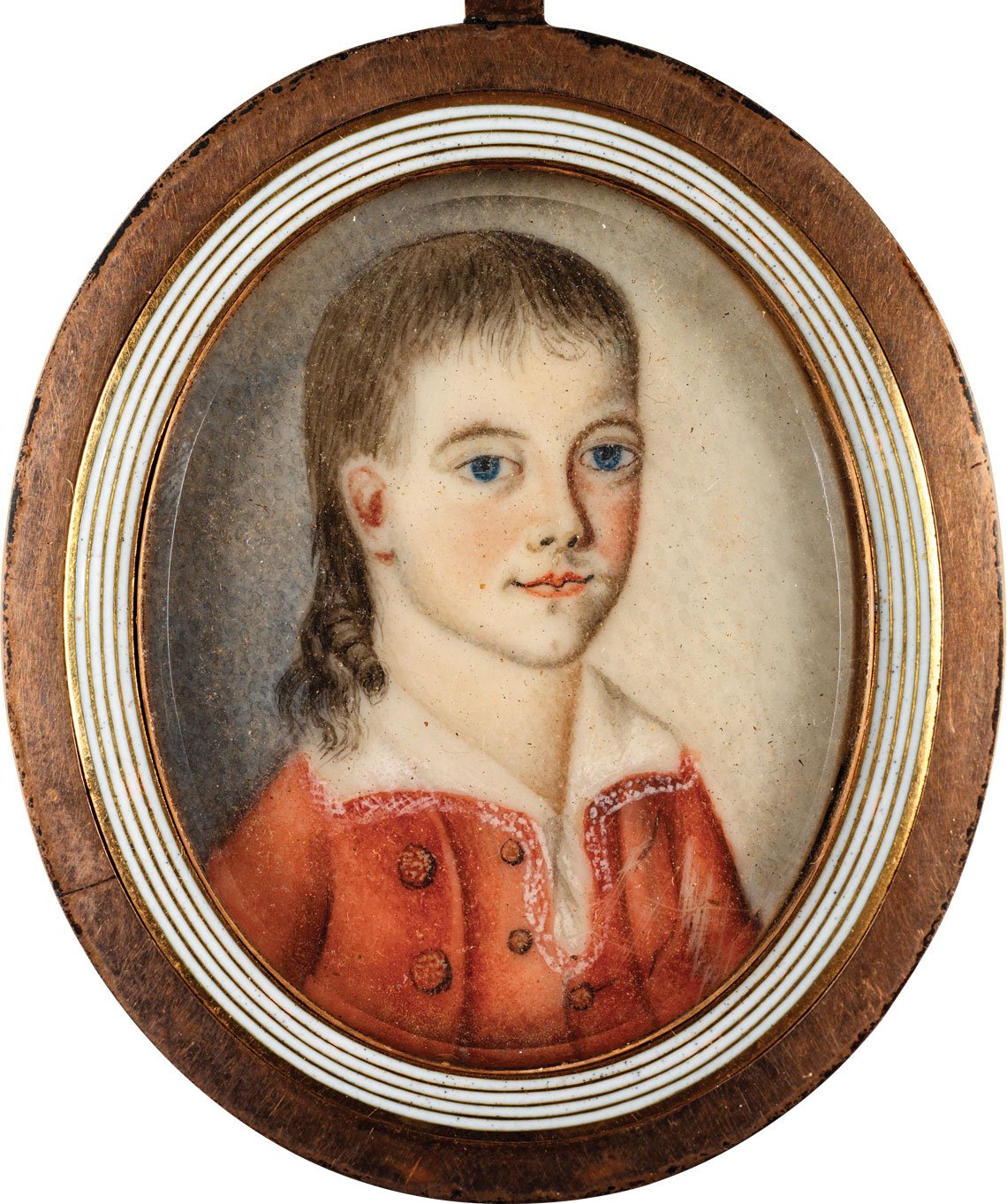Peale Portraits of the Hancock Children Brought to Light
Last month Pamela Ehrlich published an article in Antiques & Fine Art magazine and at the Incollect site titled “A Hancock Family Story: Restoring Connections.”
Ehrlich wrote:
Investigating further allowed Ehrlich to identify the baby girl in that portrait as John and Dorothy Hancock’s daughter Lydia, named after her great aunt. Little Lydia died in 1777 at the age of only nine months.
Furthermore, Ehrlich found a corresponding miniature of the Hancocks’ son John George Washington Hancock, shown above. (Terribly sad story of that boy’s death here.) And in the same purchase the art school obtained a Peale portrait of John Hancock himself, painted in the year he signed the Declaration of Independence. Read the article for the full story of the investigation, as well as the remaining mystery of a matching miniature of Dorothy Hancock.
Ehrlich wrote:
While researching portraits of Lydia [Hancock], I discovered a listing in the Smithsonian Art Inventories Catalog for an “unlocated” portrait miniature in oil [sic] of “Hancock, Thomas, Mrs. (Lydia Henchman)–Child” painted by Charles Willson Peale (1741–1827) in 1777. It was further identified as No. 354 in Charles Coleman Sellers’ Portraits and Miniatures by Charles Willson Peale (hereafter P&M). However, the death date was incorrect—Lydia Henchman Hancock died April 25, 1776. Furthermore, Peale could not have painted her as a child since she was twenty-seven years old when he was born.That miniature was at the Rhode Island School of Design in Providence.
Investigating further allowed Ehrlich to identify the baby girl in that portrait as John and Dorothy Hancock’s daughter Lydia, named after her great aunt. Little Lydia died in 1777 at the age of only nine months.
Furthermore, Ehrlich found a corresponding miniature of the Hancocks’ son John George Washington Hancock, shown above. (Terribly sad story of that boy’s death here.) And in the same purchase the art school obtained a Peale portrait of John Hancock himself, painted in the year he signed the Declaration of Independence. Read the article for the full story of the investigation, as well as the remaining mystery of a matching miniature of Dorothy Hancock.


5 comments:
So not only does the research confirm IDs for the portraits, but we can't ignore young JGW's contributions to the strong heritage of mullets here in America. Bravo!
What a touching portrait -- so much so that I am unable to follow up your link to the child's "terribly sad death" --
Yes, what we call a mullet was the fashionable style for boys in the 1770s.
The above miniature is the unmistakable work of Boston's Joseph Dunkerley.
For more about Joseph Dunkerley, see this article at the Journal of the American Revolution. He was a deserter from the British army who served under Massachusetts artillery colonel Thomas Crafts during the war and rented a house from Paul Revere in the 1780s.
Post a Comment